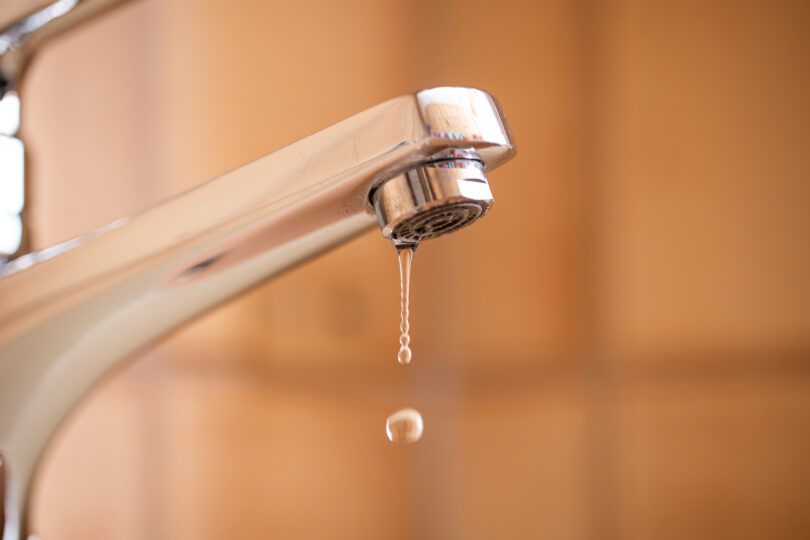Running a business comes with its fair share of challenges—but plumbing shouldn’t be one of them. When it’s working properly, no one gives it a second thought. But the moment something goes wrong—a blocked toilet, a burst pipe, or a leaking tap—it’s suddenly urgent, disruptive, and often expensive.
In commercial spaces, plumbing systems are subjected to significantly more pressure than in the average home. They’re used by more people, more often, and sometimes not as carefully. That means problems are not just more common—they’re more costly, too.
10 Common and troublesome commercial plumbing problems
Here are ten of the most frequent plumbing issues seen in commercial buildings, and why it pays to stay ahead of them.
1. Blocked toilets and drains
This one tops the list for a reason. In public or shared bathrooms, you simply can’t control what people flush. Sanitary items, paper towels, even rubbish—if it fits, someone’s tried to send it down the drain.
The result? Clogged toilets, slow-draining sinks, and in worst cases, raw sewage backing up into the room. It’s unpleasant, unhygienic, and can cost a business both time and reputation.
“Ignoring a blocked toilet can lead to extensive damage and increased repair costs, so feel free to seek professional help when needed”, says metropolitanplumbing.com.au
2. Leaking taps that never stop dripping
A dripping tap might seem harmless, but over time it can waste thousands of litres of water. In commercial buildings where multiple taps are used all day, those losses—and the water bills that come with them—add up quickly. The fix is usually simple, but the impact of ignoring it is anything but.
3. No hot water—or not enough of it
Businesses that rely on hot water—cafes, salons, clinics, childcare centres—simply can’t operate without it. If the system isn’t working properly, it might be a faulty valve, sediment in the tank, or just a system that’s too small for your needs.
In some cases, the hot water may work intermittently or take too long to reach the tap. That’s a sign something’s off, and it usually gets worse, not better.
4. Hidden pipe leaks
A small leak behind a wall or under a floor can go unnoticed for weeks or even months. But by the time you spot water damage, it’s likely already caused structural or mould problems.
Leaks often start from worn seals, corroded joints, or pressure imbalances. And when they go unseen, they don’t just waste water—they slowly eat away at your building from the inside.
5. Bad smells coming from the drain
If you’ve ever walked into a restroom or kitchen and caught a whiff of sewage, you know it’s a dealbreaker. Often, the smell comes from a dried-out trap or venting issue, but it could also point to something more serious like a partial sewer line blockage.
Not only is it unpleasant, but if customers or staff notice, it sends a very poor message about how the premises are maintained.

6. Water pressure that’s all over the place
Consistent water pressure is critical, especially for businesses with dishwashers, washing machines, or water-dependent equipment.
Low pressure can slow everything down, while high pressure can damage pipes and appliances over time. If the pressure varies across taps or changes suddenly, it’s worth getting it checked before it causes bigger issues.
7. Toilets that won’t stop running
A toilet that won’t stop running might not seem urgent, but the impact is far from minor. It usually points to a worn-out valve or internal mechanism. Left unchecked, a single leaking toilet can waste up to 700 litres of water per day – that’s nearly half a bath every hour, gone down the drain. For businesses with multiple toilets, that wastage multiplies quickly—and so does the water bill.
8. Grease trap overflows in kitchens
Any business preparing food is required to have a grease trap. Its job is to stop fats, oils and grease (FOG) from entering the sewer. But if it’s not cleaned regularly, it clogs—and fast.
Once full, a grease trap can back up into the kitchen or affect nearby drains. In serious cases, the business could face fines or forced shutdowns. Regular cleaning and maintenance are non-negotiable.
9. Ageing pipes and outdated systems
Many commercial buildings still rely on plumbing that was installed decades ago. Pipes made of galvanised steel or old copper are prone to rust, scaling, and cracking.
Old systems also tend to be less efficient and more expensive to maintain. Replacing them might seem like a big job, but doing it proactively can save a fortune compared to dealing with a sudden failure.
10. Temperature issues and scalding risks
Some commercial bathrooms and kitchens are required by law to regulate hot water temperatures to prevent scalding. That’s where tempering valves come in—but they need to be properly installed and maintained.
If your hot water suddenly feels hotter than usual (or cold when it shouldn’t be), there’s a good chance the tempering valve needs adjusting or replacing. In workplaces, especially those with children or vulnerable people, this becomes a safety issue.
Why small plumbing problems become big ones
A common theme with commercial plumbing is this: small issues tend to go unnoticed until they’re anything but small. And when something breaks, it doesn’t just affect comfort—it affects business operations, staff morale, and even customer trust.
There’s also a cost to ignoring these problems. Rising water bills, damaged stock or infrastructure, even slip hazards from pooling water—all of these can come back to bite if early signs are overlooked.
The case for proactive plumbing
Plumbing isn’t just about pipes and water. It’s about keeping your business running smoothly, safely, and efficiently.
A proactive maintenance plan—along with a reliable plumber on call—can make all the difference between a minor fix and a costly disaster. If something doesn’t feel right, trust your instincts and get it looked at. Chances are, your future self (and your bottom line) will thank you.







